New Zealand Maori Whalebone Short Hand Club ‘Patu Parāoa’
A New Zealand Maori Whalebone Short Hand Club ‘Patu Parāoa’
Fine aged smooth mellow creamy patina
18th – Early 19th Century
Size: 35cm long - 13¾ ins long
cf: Similar examples in the Maori Collections of The British Museum no. 712 described as 18th Century
Fine aged smooth mellow creamy patina
18th – Early 19th Century
Size: 35cm long - 13¾ ins long
cf: Similar examples in the Maori Collections of The British Museum no. 712 described as 18th Century
A New Zealand Maori Whalebone Short Hand Club ‘Patu Parāoa’
Fine aged smooth mellow creamy patina
18th – Early 19th Century
Size: 35cm long - 13¾ ins long
Fine aged smooth mellow creamy patina
18th – Early 19th Century
Size: 35cm long - 13¾ ins long
Unlike other hand clubs elsewhere in the world that are used for bludgeoning downward blows, Maori patu were designed for jabbing and thrusting movements, for quick in fighting in which the fraction of a second was too important to waste in raising the weapon to strike a blow. The whalebone was cut from the pan-bone of a sperm whale with a sandstone saw. Grooves were then cut from the front. The back was then sawed away to take out the resulting slab. This was then formed into a club shape by chipping and sawing with stone tools. Each individual club was weighed and balanced to suit the hand and preference of the warrior for whom it was being made. Such clubs were used over many generations and became associated with the Maori who wielded them. Regarded as heirlooms, they were ‘Taonga Tuku Iho’ – treasures passed down from the ancestors.
Ex Private collection of the late Peter Dineley
cf: Similar examples in the Maori Collections of The British Museum no. 712 described as 18th Century
cf: Similar examples in the Maori Collections of The British Museum no. 712 described as 18th Century
New Zealand Maori Whalebone Short Hand Club ‘Patu Parāoa’
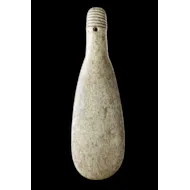
SOLD

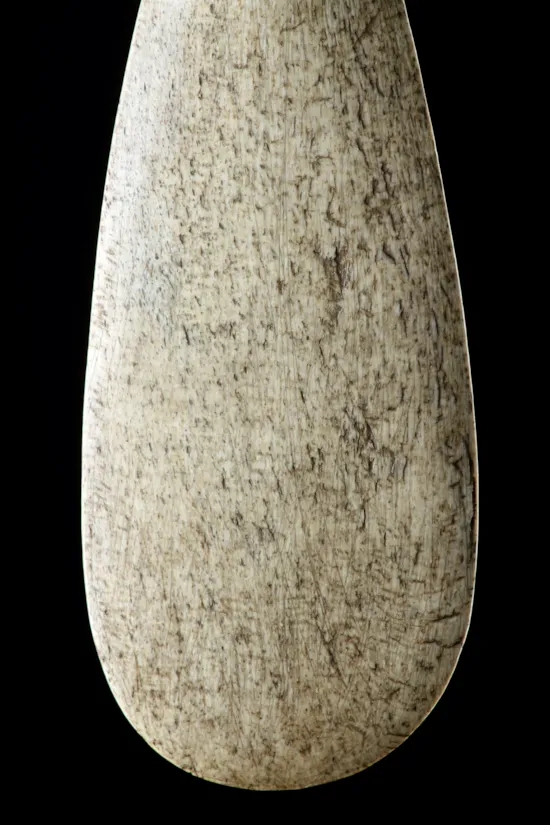
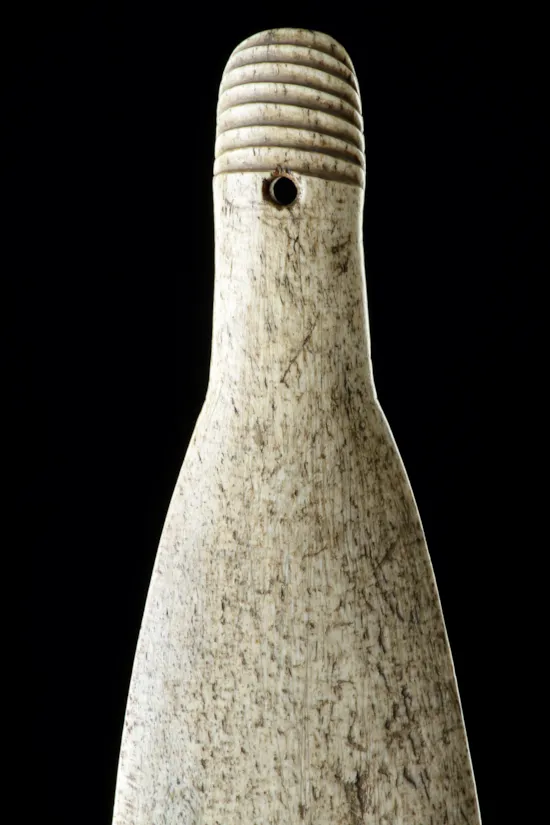
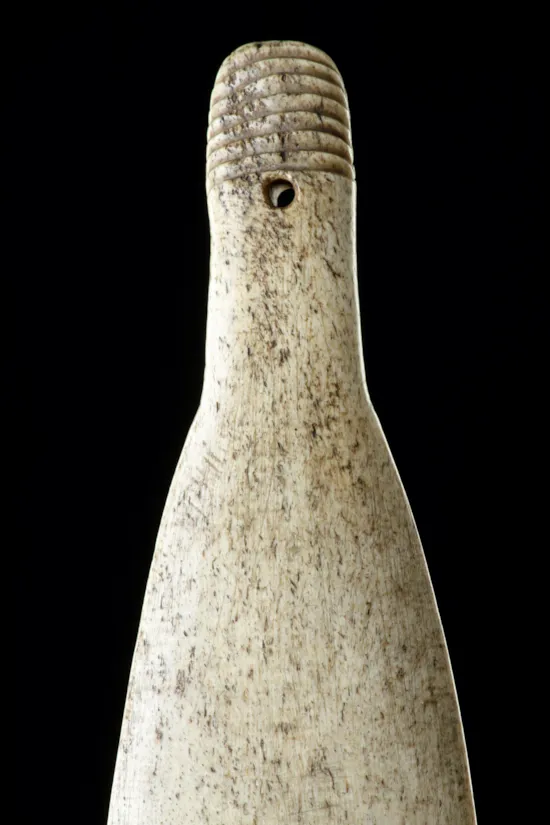
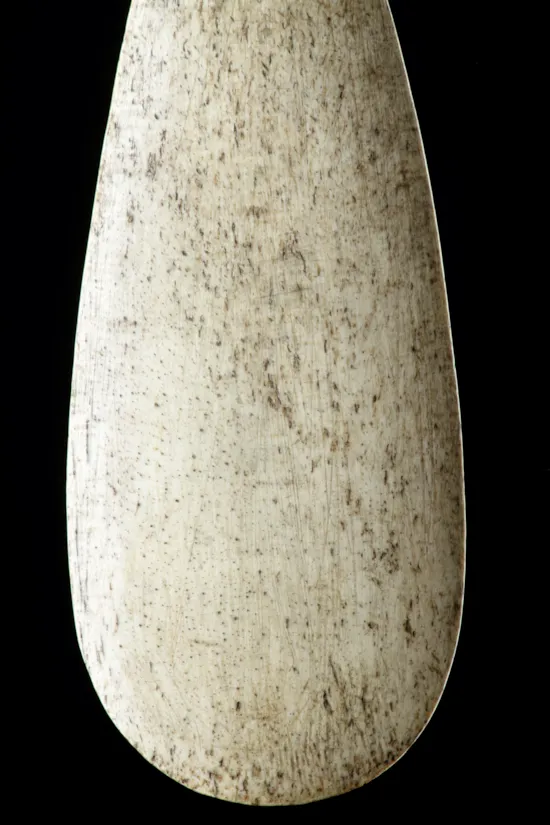
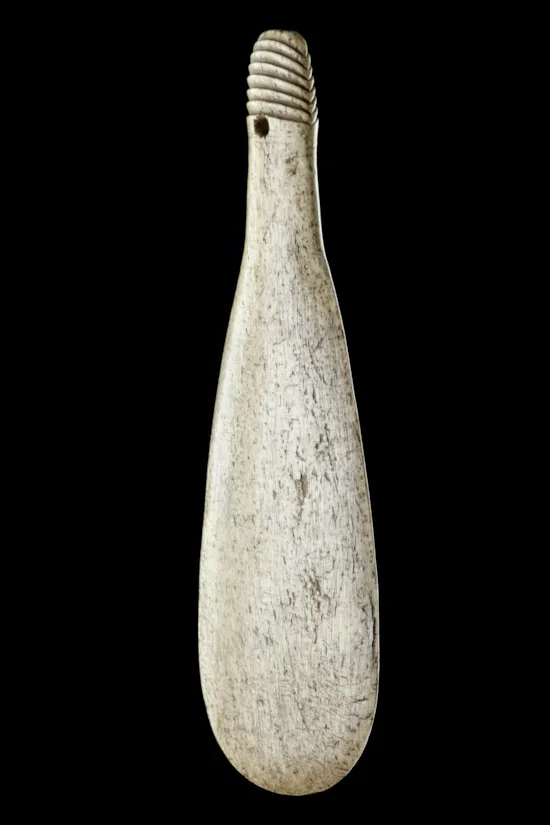
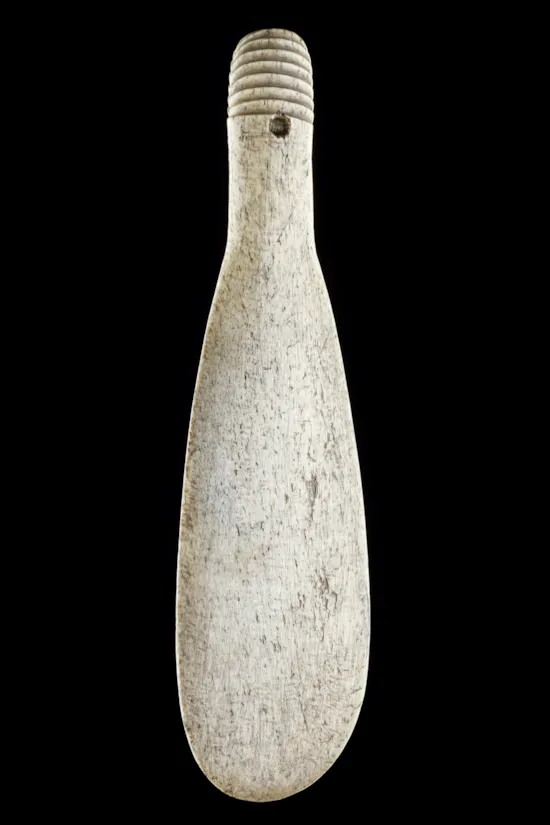







YOU MAY ALSO LIKE

